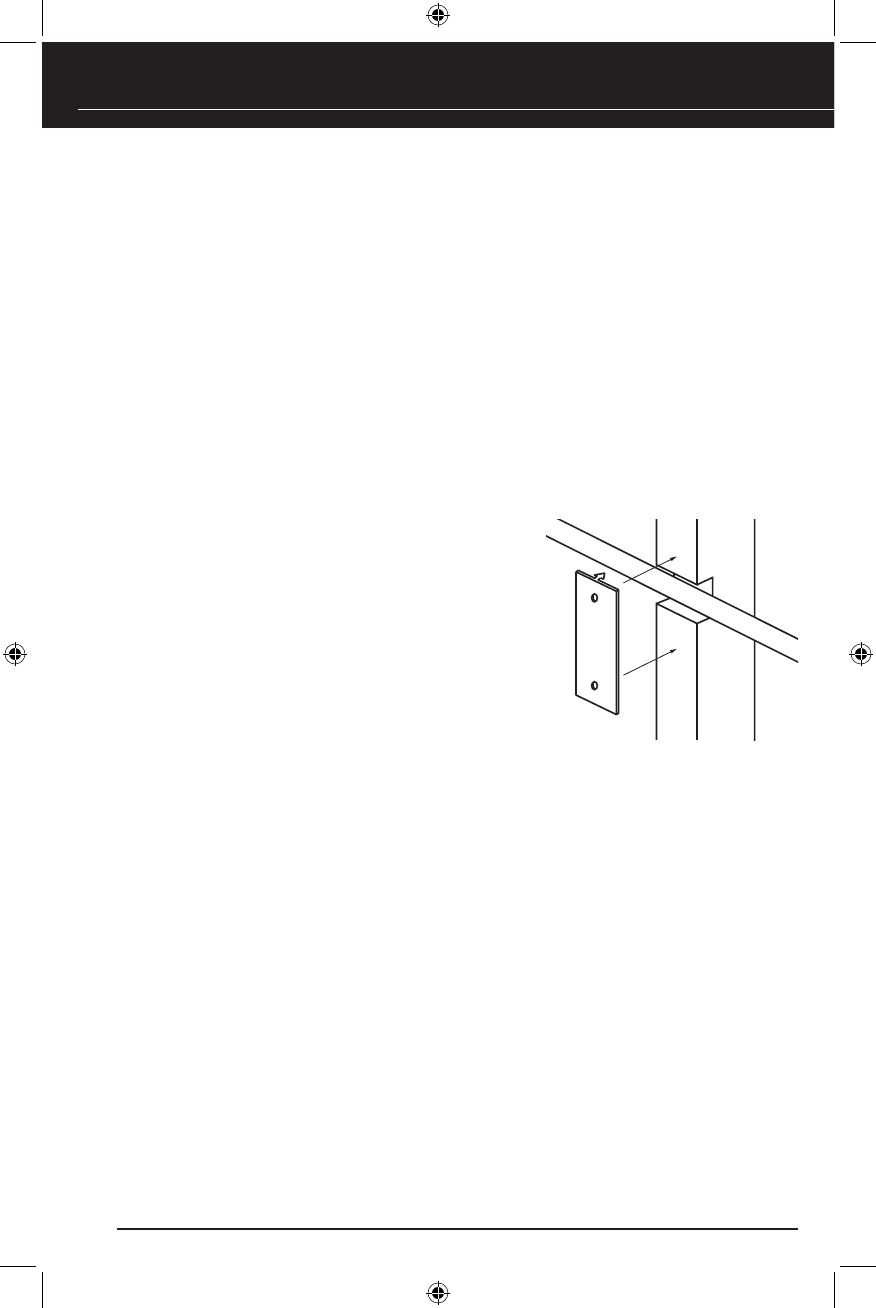
RUNNING THE LOUDSPEAKER WIRE IN NEW
CONSTRUCTION
(CONTINUED)
ABOUT DRILLING
Use a bit that is large enough for the wires you plan to run. This is an important consideration,
since you may be drilling a lot of holes. Here are some additional tips:
• We recommend using an auger bit for rough-in wiring. It will actually pull itself through
the wood, so that the drill motor, not you, does most of the work.
• Always drill the holes in the center of the stud. If you have to notch the stud or drill the
hole closer than 1 inch from the edge of the stud, protect the wire with a nail plate, as
shown in
Figure 5.
• When drilling holes in ceiling joists, drill in the center of the joists and try to locate
the hole near the end of the joist.
IMPORTANT: DO NOT DRILL THROUGH A GLU-LAM OR
LOAD-BEARING BEAM WITHOUT THE DIRECTION OF
YOUR CONTRACTOR.
• Try to line the holes up perfectly, because it makes
pulling the wire much easier. A good technique is
to snap a chalk line across the face of the studs or
against the bottom of the ceiling joists. Then work
backward so that you can always see the holes
you have already drilled. Paying careful attention
to this will save you time later on.
PULLING THE CABLE
Pull the cable in sections (from the stereo to the volume control, from the volume control to the
loudspeaker). Start with the longest sections and use leftover wire to complete the short sections.
Also consider the following wiring tips:
• If you plan to pull many rooms at the same time through a central route, walk off
the distance to each destination, add a generous “fudge factor” for turns and other
obstacles, and then cut off each section, so you can pull a bundle of wires at once.
• When running the wire further than 4-1/2 feet from a hole in a stud or joist (e.g., open
attic space, going up walls, etc.), be sure to fasten the wire to the joists or studs using
cable clamps or appropriately-sized wire staples. The wire should not have large sags
in it, nor should it be too tight.
• Try to protect the wire from being stepped on in attics or other unfinished crawl
spaces. Use guard strips, raceways, or conduits to protect the cable. Consult the local
building code for special requirements in your area.
10
Figure 5. Installing a nail
plate to protect wiring in a
notched stud.
DS00421ACN_HDFX.indd 12 5/6/05 5:05:17 PM


















